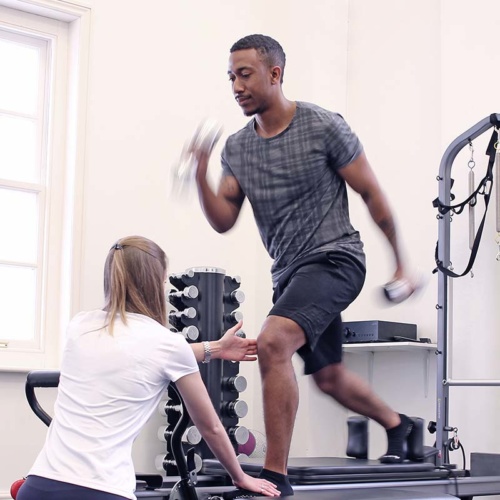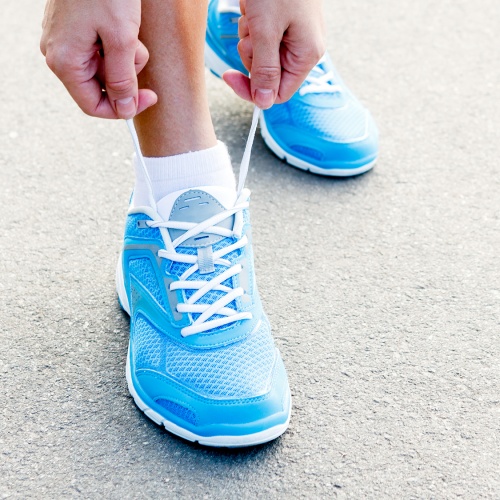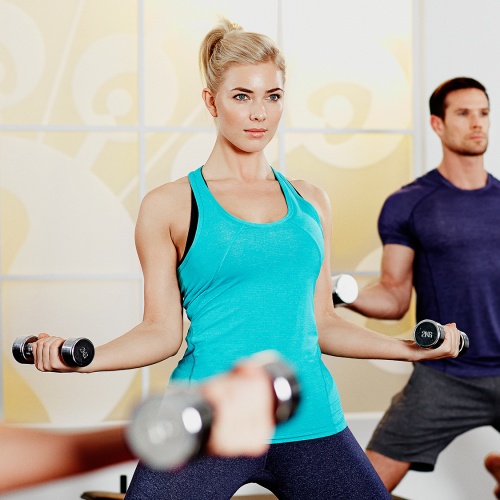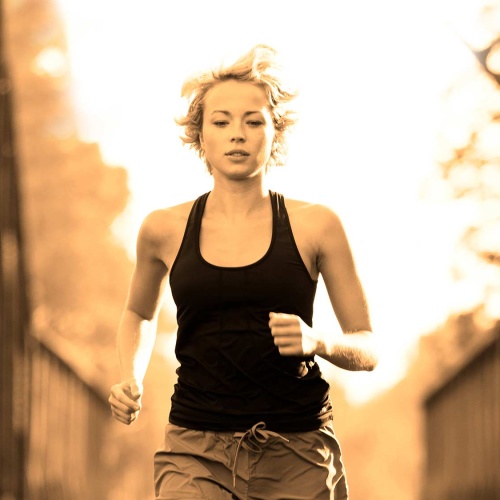Mark Edmonds has been a Sports Massage Therapist for over 20 years. Before joining TenPhysio, he worked with the GB Triathlon Team and also at the 2012 London Olympic Games within Track and Field Athletics. He was a GB Elite Team triathlete from 1989-97, having represented GB on over a dozen occasions and has competed in 7 Ironman triathlons including the 2004 World Championships in Hawaii.
Triathlons are 3 gruelling events, back to back. Each requires long hours of training and practice and each requires the athlete to stay focussed, motivated and above all injury free.
It’s not a discipline that appeals to everyone. But some of the insights and techniques that help triathletes gain maximum benefit from their training can also add real value to the thousands of exercisers to be found hitting the UK’s parks, bike lanes and pools on a daily basis.
Mental variety
Boredom is the enemy of motivation. Don’t just do the same thing every session. If you’re a runner, jump on the bike. If you’re a cyclist, head for the pool. In fact, don’t just restrict yourself to the usual disciplines; mixing it up will help keep you interested and energized. So add in some pilates, climbing, weights, rowing, zumba – or anything else that floats your boat.
Use different muscles
The cardiovascular system is much less prone to fatigue than the musculoskeletal system. So whilst certain muscles groups might be aching and in need of recovery time before the next session, the heart and lungs may be ready for more. So by adding variety to your training, you can train harder and more often. Working different sets of muscles each time offers a much more balanced training effect – great for all round fitness – and there’s also less risk of over-training and over-use injuries in specific areas and muscles.
It’s not just about effort
The danger for many recreational exercisers is that the focus is usually on getting fitter rather than better. It’s all too easy to think that when exercise time is limited, it’s best spent getting the heart rate up, the sweat pouring and the laps counted off.
The idea of dropping the intensity, and working on drills and movement patterns often feels like less of a workout. But by taking time to improve and maintain your technique, you’ll be reducing the stress – and the resulting wear and tear – on muscles and joints, and reducing the risk of injury as a result. All of which will help you stay fitter and healthier for longer.
Be good to yourself
Taking a prehabilitative approach to exercise – i.e. strengthening and preparing the body for the demands of the sport or activity you are about to embark on – is vital to avoid injury. Everybody has their weak points and identifying and strengthening these weak areas is the key to reducing the chances of sustaining injury.
Regular sports massages can be a highly effective prehabilitation tool, helping to identify and reduce areas of tightness in the body and improving function and the range of movement of joints. By reducing asymmetry in the flexibility of muscles and mobility of joints, it’s also a really effective way of reducing the chances of uneven ‘wear and tear’ patterns developing.
The advantages of regular sports massages in general
Triathletes are generally great advocates of sports massage. For most, it’s a fundamental part of their training regime, primarily as a preventative measure for avoiding injury, for enhancing recovery between training sessions and rebalancing the body by loosening over-tight areas of tension.
Injury prevention and management apart, Sports Massage offers a number of valuable advantages for exercisers at every level, from elite athletes to weekend warriors.
Benefits include:
• speeding up the rate of recovery from exercise by assisting with waste product removal and also by improving the delivery of oxygen and nutrients to the cells
• allowing higher frequency and/or quality of training and thus improving both fitness and performance
• helping manage old injuries and aiding recovery from existing/new ones
• improving flexibility, which in turn can reduce the amount of energy needed to power the body
• helping relax the mind and adding psychological benefits which, for the more competitive athletes amongst us, could make the difference between winning and losing helping relieve occupational related tension in the back, neck and shoulders
Sports massage for swimmers…
Swimming predominately uses the upper body muscles (back, chest, shoulders and arms) to generate power and speed. Because of the repetitive nature of the arm actions, shoulder and neck issues are the main area of concern (often the result of poor techniques, frequently compounded by inappropriate training). Sports massage can help to identify and reduce areas of tightness in the muscles.
Lengthening tight muscles and increasing their range of motion, not only increases speed through the water, but also delays the onset of fatigue and helps reduce levels of lactic acid accumulation.
… for cyclists…
On the bike, the areas of work are the powerful gluteal group (the muscles in the bottom), the quadriceps and the hamstrings, and the areas most susceptible to injury are the lower back, knees, hamstrings and the back of the neck.
Sports massage can help to reduce tension and improve flexibility of the hamstrings group, and also reduce tightness in the lower back and neck. It also helps flush waste products that can build up in the large muscle groups of the quadriceps and gluteals.
The other injury risk is falls. While there’s little sports massage can do to stop accidents from happening, it can help speed up the recovery of soft tissue injuries once the initial wound healing phase is done.
… and for runners.
A high-impact sport, running causes the highest amount of injuries of the 3 triathlon desipline. Runners hit the ground with anything between 5 and 9 times their body weight on each stride.
Over a typical 10km run, or even a 26.2 mile marathon, the cumulative effect of those impacts is immense. Whilst a reasonable amount of impact on the body is advisable to help fend off the risks of osteoporosis (bone thinning) in older age, too much impact carries a very high risk of over-use injuries.
Main areas of weakness are the knees and ITBs (iliotibial band) from the continual stress from flexion and extension movements … often made far worse through poor technique and muscular instability in the glutes. Calves, shins, ankles, feet and achilles tendons are also common problem areas, often worsened by lack of sufficient stretching.
Whilst sports massage can never ‘bullet-proof’ you completely against injury, it can definitely help to soften the muscles, improve the function and quality of movement patterns, shorten recovery time after training and help reduce and manage injuries.
How often?
How often you should have Sports Massages generally depends on why you’re having them:
• Recovery from medium level of exercise (2-4x a week): Anywhere from once a week to once a month.
• A high level of training, especially for a high impact sport such as endurance running: Anywhere from 2x a week to once a fortnight. Especially when in the high volume or high intensity phase of training.
• Recovery from injury: 1-2x per week in the early phase, reducing frequency as things improve.
• General wellbeing: Anywhere from once a week to once every 2 months. Where it’s occupational (i.e. to reduce tension built up in the back, neck and shoulders having spent many long days sat in front of a computer screen, exacerbated by the associated pressures and stresses of work), it depends on the clients level of pain and/or discomfort. If things are really in a bad way initially, I suggest 2 sessions a week for perhaps the initial 2-3 weeks of treatment.





